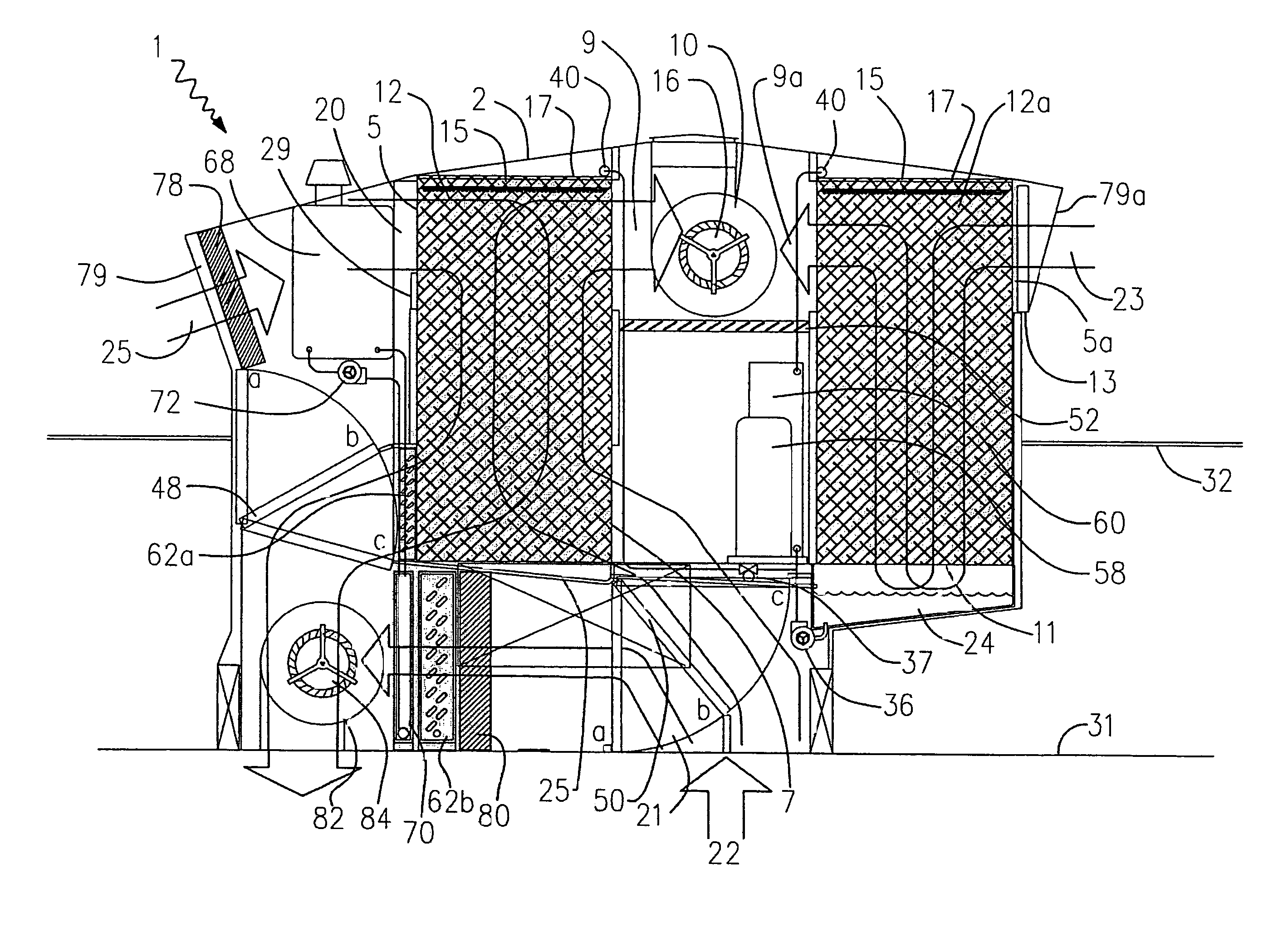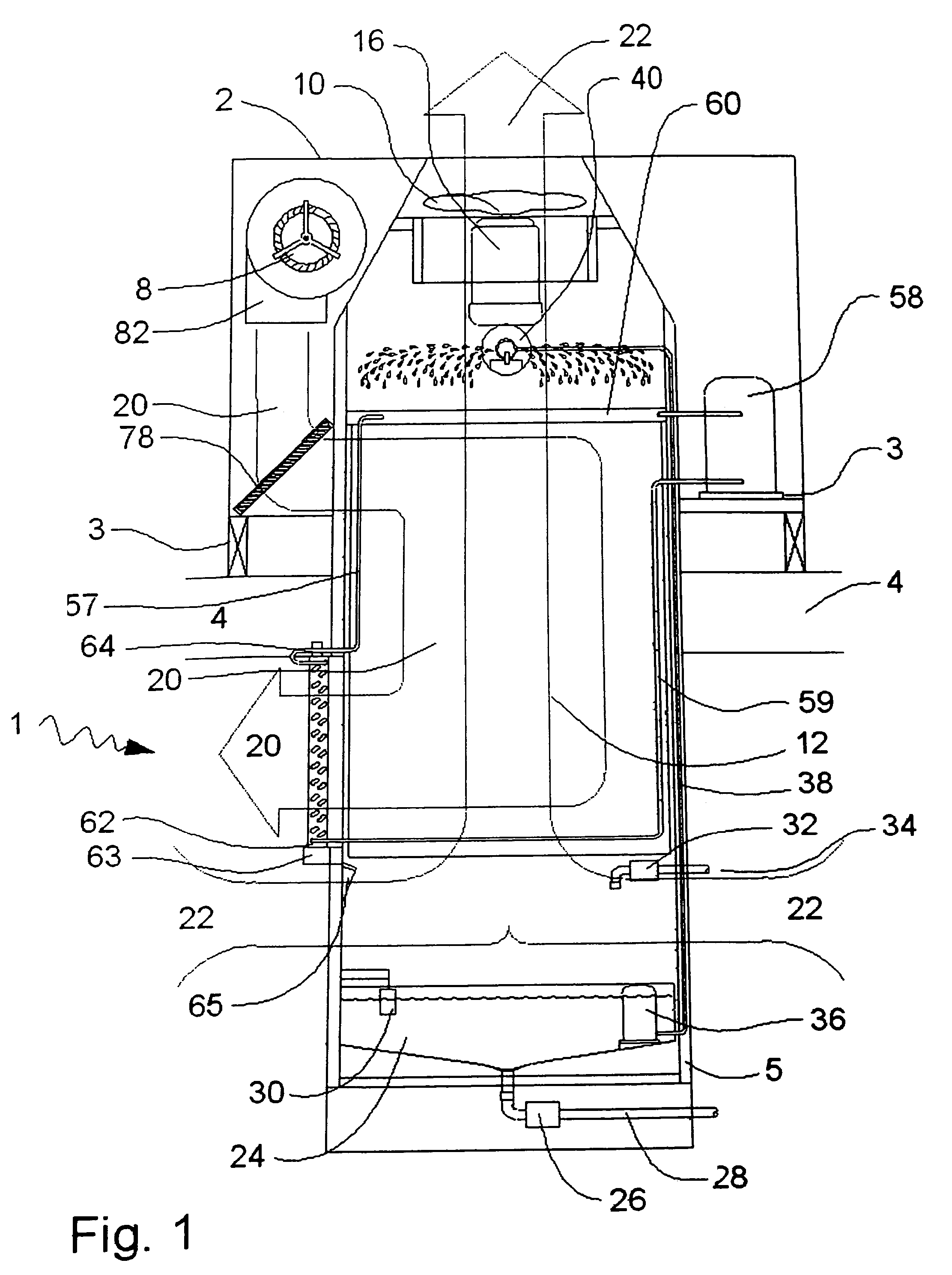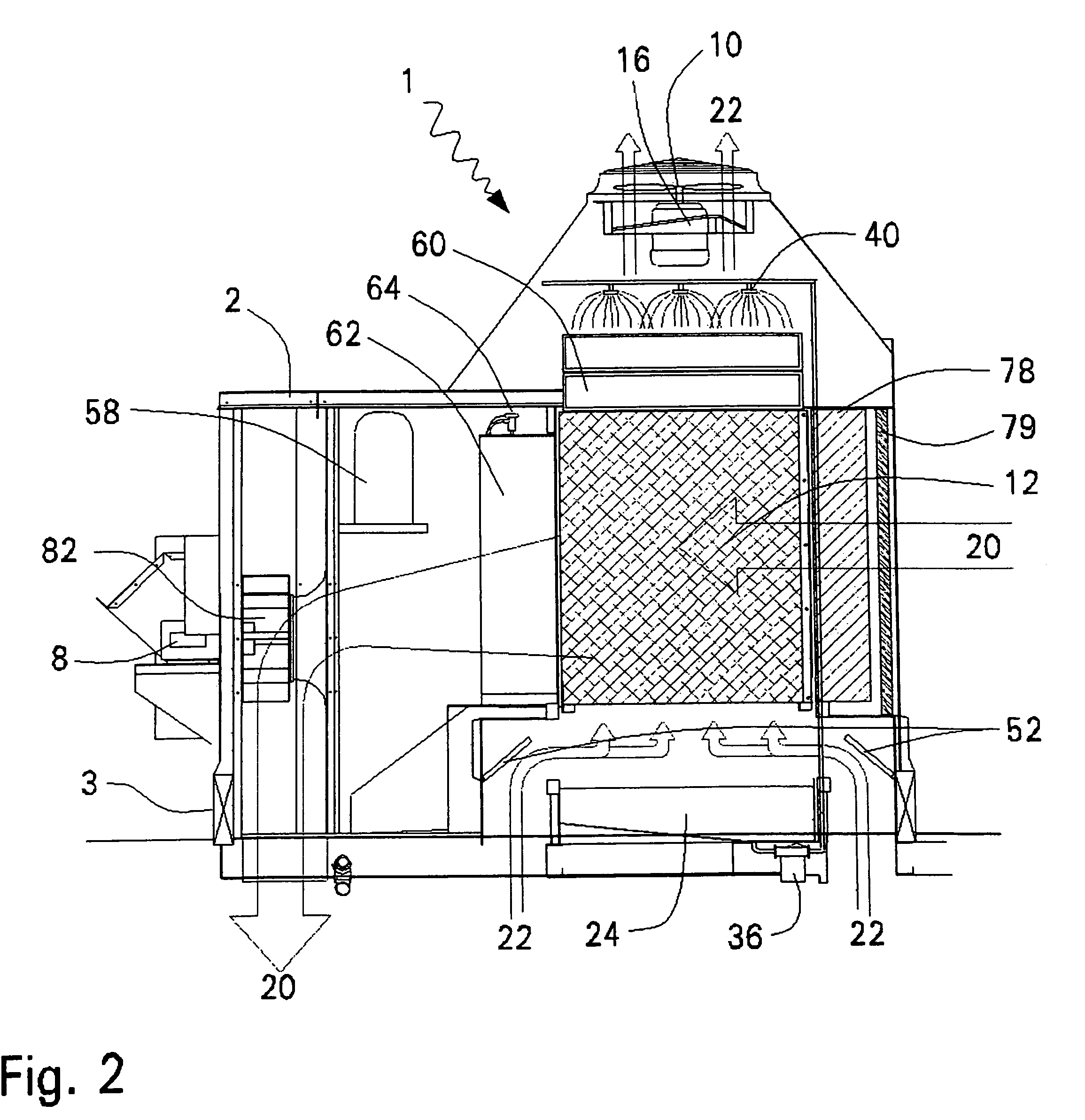Hydronic rooftop cooling systems
a technology of rooftop cooling and packaged cooling, which is applied in the field of packaged rooftop cooling units, can solve the problems of reducing cooling efficiency by as much as 20%, and achieve the effects of improving rtu efficiency, enhancing rtu efficiency, and improving latent cooling control
- Summary
- Abstract
- Description
- Claims
- Application Information
AI Technical Summary
Benefits of technology
Problems solved by technology
Method used
Image
Examples
Embodiment Construction
[0023]Exemplary embodiments of the present invention are described hereafter with reference to the Figures. The exemplary embodiments may include the following:[0024]1. evaporative cooling sub-systems including an indirect evaporative heat exchanger, a water reservoir, a pump, a water distribution system, an exhaust fan, a water supply system, and a reservoir drainage system;[0025]2. refrigeration sub-systems including a compressor, a condenser, an evaporator, and an expansion device, to cool supply air for a building; and[0026]3. air supply sub-systems including outdoor air inlets, a supply blower, and an air filter.
[0027]FIGS. 1 and 2 show exemplary embodiments that supply 100% conditioned outdoor air to a building, and are “cooling only” units, i.e., without space heating components. In the 100% outdoor air system, an amount of air equal to the supply air quantity must leave the building (ideally through the rooftop unit), and no building air returns to mix with the supply air 10...
PUM
 Login to View More
Login to View More Abstract
Description
Claims
Application Information
 Login to View More
Login to View More - R&D
- Intellectual Property
- Life Sciences
- Materials
- Tech Scout
- Unparalleled Data Quality
- Higher Quality Content
- 60% Fewer Hallucinations
Browse by: Latest US Patents, China's latest patents, Technical Efficacy Thesaurus, Application Domain, Technology Topic, Popular Technical Reports.
© 2025 PatSnap. All rights reserved.Legal|Privacy policy|Modern Slavery Act Transparency Statement|Sitemap|About US| Contact US: help@patsnap.com



